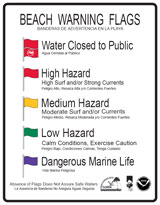
by Marie Arick | Jun 27, 2017
Summer is upon us and that means many of us will be enjoying pools, lakes, rivers, and the ocean. Florida provides many opportunities for outdoor water recreation that we should enjoy responsibly and safely. Are you prepared to handle a water emergency? Do you have water safety rules? Do you know CPR? These are all things to consider. Not everyone is ‘waterproof’ and taking precautions can really prevent a misfortune.
As the warm summer months draw many of us to the water for fun and fellowship, remember, sudden things are sudden and people drown quickly and quietly. Being honest about your swimming abilities is important. If you are not a strong swimmer, chances are you will not be able to help someone in trouble. This is also important if you are supervising others. Take the time to work on your swimming skills with others or take lessons. Knowing basic cardiopulmonary resuscitation, CPR, also can increase the chances of survival for a drowning victim.
There is safety in numbers; enlist another adult to help when supervising swimming children. If you are at a public beach, river, or lake, locate the lifeguard and position yourself close to the stand. If the beach is the locale for the day, look for the flag to alert you to the surf conditions and adhere to the recommendations of the flag and signage. If you are at a venue with no lifeguard on duty, you are now the lifeguard! Locate any emergency devices available to you and be certain you have cell phone reception in case you must call for help. Have those you are supervising demonstrate their swimming abilities. Knowledge of someone’s swimming abilities in advance can allow you to set safer boundaries. For example, if a child cannot swim the width of the pool without stopping and placing their feet on the bottom, you have determined, for their safety, they must remain in the shallow area of the pool where they can stand up. Another great option is to have the children utilize swimming vests. Never allow for rough play in the water. What seems to be harmless quickly can become life- threatening.
No matter the venue, ocean, river, lake, or pool, be steadfast in monitoring the swimmers and prepared to assist if you are needed. The American Red Cross and National Swimming Pool Foundation have an online course to educate pool owners. The American Heart Association provides the option of taking an online CPR course. Being prepared for a potential crisis is the first step to avoiding a crisis. Many wishes for a safe summer of water fun!
by Elizabeth | Jun 27, 2014
 Going to the beach or pool is a popular summer activity but did you know a child can drown in as little as one inch of water? Drowning is usually quick and silent. A child will lose consciousness two minutes after submersion, with irreversible brain damage occurring should the child survive. According to the Consumer Product Safety Commission, at least 350 children die each year from drowning, with most occurring in the summer months.
Going to the beach or pool is a popular summer activity but did you know a child can drown in as little as one inch of water? Drowning is usually quick and silent. A child will lose consciousness two minutes after submersion, with irreversible brain damage occurring should the child survive. According to the Consumer Product Safety Commission, at least 350 children die each year from drowning, with most occurring in the summer months.
Keep an eye on young children and prevent them from drowning. Here are a few points to consider when you are around water:
If you have a pool or spa, install a 4-foot fence around it. Besides lowering your insurance premiums, you will prevent direct access to the pool. Children are curious and move quickly; a “self-locking” latch on the gate provides the best obstacle for young children who might want to jump into the pool.
Install safety drain covers. These devices prevent a body part, hair, or clothing from being trapped by the drain cover. All public and private pools as well as spas are required to be fitted with a drain cover per the Virginia Graeme Baker Pool and Spa Safety Act of 2007. For specifications, visit www.poolsafely.gov.
Supervise your child. The most important preventive tactic is to supervise your child around water at all times. This means actively watching them, keeping them within arms’ reach, and not just glancing up every now and then. Don’t assume they will splash and yell for help if they get into trouble. Children can drown quietly in just a few minutes.
Learn to swim. Children can take formal swimming instruction from the age of four years. Water safety skills are included in the training. Swimming programs are available for younger children and babies, but the emphasis is on building confidence and encouraging the child to enjoy water, rather than teaching them to swim. However, children under age five may not be able to use these skills in an emergency so never rely on this to keep them safe.
Use flotation devices. If you buy personal flotation devices, like inflatable vests, make sure they conform to U.S standards – always check the label. You should think of these devices as something to help familiarize your child with water, not as a safety item. A flotation device is not a replacement for supervision. Always supervise your child, even when they are wearing their personal flotation device, in case they tumble upside-down or slip through the vest.
At the beach: Supervise your child at all times – don’t assume that a beach that was safe in the past is safe now, since the action of waves, weather, and wind can influence depth and currents. If the beach uses a color-coded flag warning system, check the flag color and heed the guidelines. Only take your child to beaches with lifeguard patrols. Make sure your child swims only in the protected area. Teach your child to float and raise an arm to signal for help from a lifeguard.
Going to the beach or pool is a lot of fun – keep it safe and always be alert around children. Have a great and safe summer!


